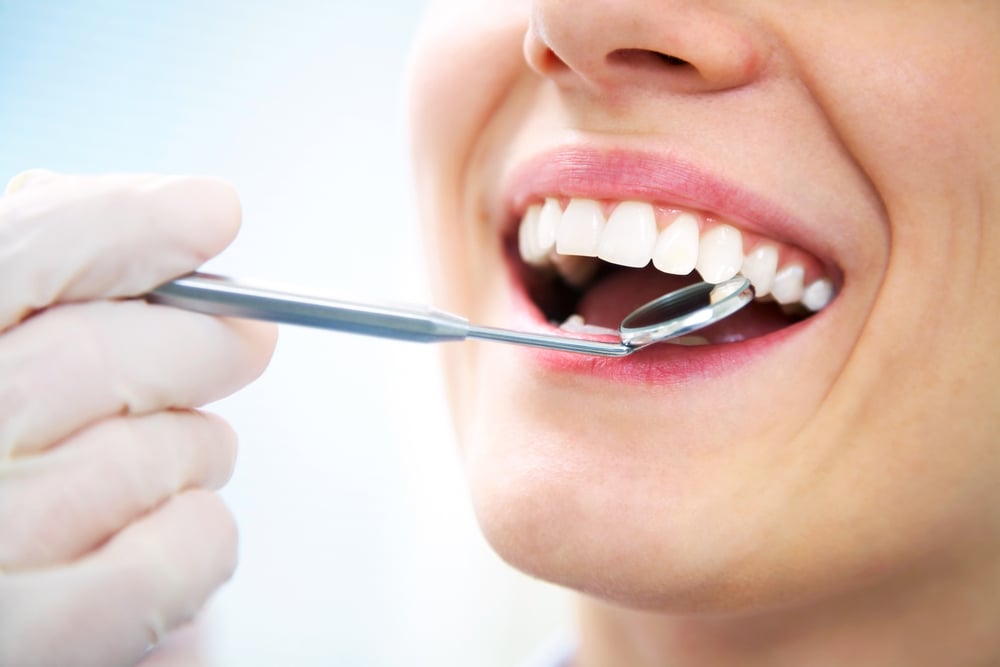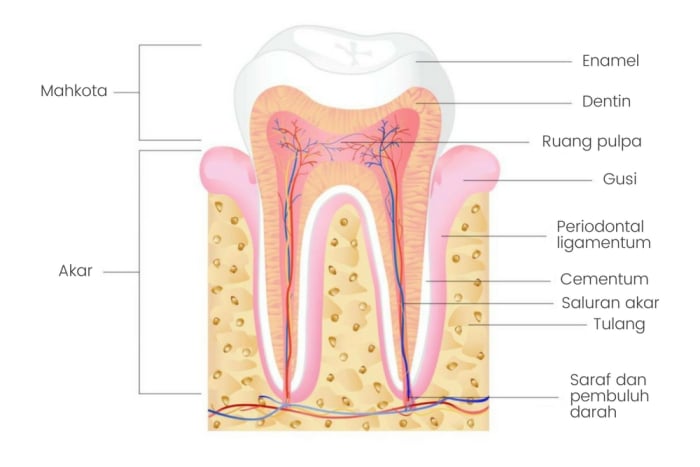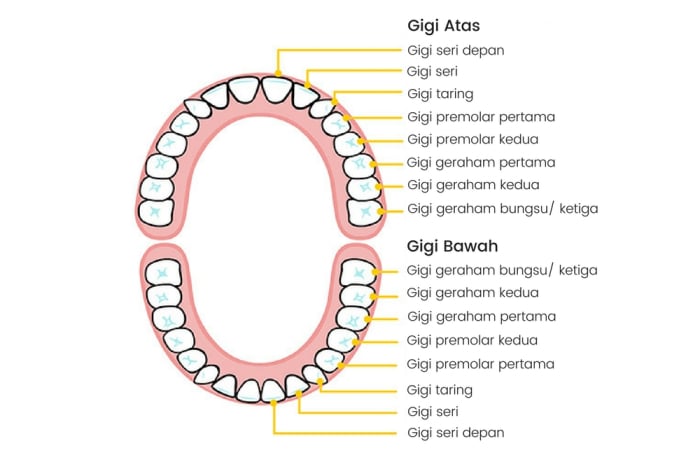Know the Anatomy of Teeth, Types of Teeth, and the Function of Each Part

Teeth are a part of the human body which is quite complicated. The function of the teeth is not only for chewing and digesting food, but also plays an important role in speech. To find out more about teeth, see the full dental anatomy here.
Recognize the development of tooth structure
According to Shantanu Lal, adental surgeon and professor of dentistry at Columbia University Medical Center, saying that the teeth tend to grow symmetrically. This means that the upper and lower molars on the left side grew along with the upper and lower molars on the right side.
Tooth development begins long before your first teeth are visible. For example, a baby’s first tooth appears at more than six months of pregnancy, but development of teeth actually begins at the beginning of the second trimester.
The crowns of the teeth are formed first, while the roots continue to develop even after the teeth have appeared.
Between the ages of 2.5 and 3 years, the 20 main teeth have started to grow and remain until about 6 years of age. The twenty teeth consist of four incisors, two canines, and four molars in each jaw.
Between the ages of 6-12 years, milk teeth began to replace with permanent teeth.
Adult teeth begin to grow between the ages of 6 and 12 years. Most adult teeth consist of 32 permanent teeth. The number of adult teeth consists of four incisors, two canines, four premolars, four molars, and two wisdom teeth in each jaw.
What is the anatomy of the teeth?

Dental anatomy is divided into two basic parts. The first part is crown, which is the visible, white part of the tooth. The second part is the root of the tooth which you can’t see.
The roots extend below the gum line and help bind the teeth to the bone. The number of roots for each tooth type is different. Incisors, canines, and premolars usually have one root, whereas molars have two or three roots.
Your teeth have several types of tissue and each one has a different function. Tooth anatomy can be seen from the following tooth structure:
- Enamel is the hardest and white outer part of the tooth. Enamel contains 95% calcium phosphate which functions to protect vital tissues in the teeth. Enamel has no living cells, so it cannot repair itself when putrefaction occurs.
- Dentin is the layer underneath the enamel. It is a hard tissue containing small tubes. When the enamel as the protective layer of dentin is damaged, hot or cold temperatures can enter the tooth through this pathway and cause it tooth sensitivity or the onset of pain.
- Cementum is a layer of light yellow connective tissue that holds the root of the tooth firmly to the gums and jawbone. The best way to protect them from rot is to take good care of your gums. If not treated properly, the gums can become sore and shrink, making the cementum build up of plaque and bacteria which can be dangerous.
- Pulp is the softer portion of dental anatomy, is found in the center and core of your teeth and contains blood vessels, nerves, and other soft tissues. This section is used to provide nutrition and signals to your teeth. This part of the tooth structure also contains small lymph vessels that carry white blood cells to the teeth to help the teeth fight bacteria.
- Periodontal ligament is the tissue that helps hold the teeth firmly against the jaw. The periodental ligament helps the teeth to withstand force when biting and chewing.
- Gum is soft tissue pink. Duty to protect the jawbone and tooth roots.
Types of teeth
Your teeth help you chew your food so it’s easier to digest. Each type of tooth has a slightly different shape and has its own function. Check out the list of tooth types in the following dental anatomy.

- Incisors are 8 teeth in front of your mouth (4 above and 4 below). Incisors work to bite, cut, tear, and hold food. Incisors are usually the first teeth to appear, around 6 months of age.
- Canine tooth are the teeth that are on either side of the incisors. It is the sharpest tooth and is used to tear food. Canines appear between the ages of 16-20 months with the canines just above and below. However, in permanent teeth, the order is reversed, new canines will replace around the age of 9 years.
- Premolar used for chewing and grinding food. An adult has 8 premolars on each side of the mouth, 4 on the upper jaw and 4 on the lower jaw. The first premolar appeared around age 10 with the second premolar appearing about a year later. The premolars are located between the canines and molars. Premolars and molars have a series of elevations (points or peaks) that can be used to break down food particles. Each premolar generally has two valves which are used to crush food.
- Molars also used for chewing and grinding food. Molars are flat teeth that are located at the back of the mouth. These teeth appear between 12-28 months of age, and are replaced by first and second premolars (4 upper and 4 lower). The number of molars is 8.
- Wisdom teeth is the last tooth to emerge, located behind the molar. Usually wisdom teeth it will not appear until 18-20 years of age. However, in some people these teeth may not grow at all.
Unfortunately, these wisdom teeth can grow against the other teeth and cause pain, so they must be removed immediately. If the growth of wisdom teeth is painful and disrupts comfort, it is usually necessary to undergo surgery to remove them.
Hello Health Group and Hello Sehat do not provide medical advice, diagnosis or treatment. Please check our editorial policy page for more detailed information.